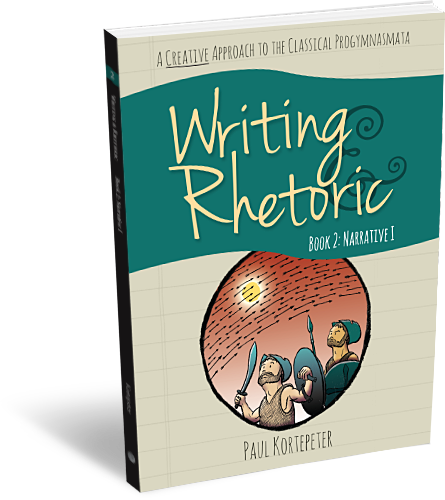Product Description
Sample
Students are often expected to write with no clear model before them. Modern composition scolds traditional writing instruction as rote and unimaginative. It takes imitation to task for a lack of freedom and personal expression. And yet, effective communication from writer to reader always requires some sort of form and structure. Many of history’s greatest writers learned by imitation. In other words, writing takes the same kind of determined study as ballet or diving.
Creativity uses conventional form as a stage or a springboard from which to launch grand jetés and somersaults. Too often students are expected to tackle complex writing assignments without learning the necessary intermediate steps. The assumption is that because most everyone can speak English well enough to be understood, and form letters with a pencil, that everyone should be able to write well. Yet how many of us would expect a child to sit at a piano, without piano lessons, and play a concerto? Writing is never automatic.
The Writing & Rhetoric series method employs fluent reading, careful listening, models for imitation, and progressive steps. It assumes that students learn best by reading excellent, whole-story examples of literature and by growing their skills through imitation. Each exercise is intended to impart a skill (or tool) that can be employed in all kinds of writing and speaking. The exercises are arranged from simple to more complex. What’s more, the exercises are cumulative, meaning that later exercises incorporate the skills acquired in preceding exercises. This series is a step-by-step apprenticeship in the art of writing and rhetoric.
Narrative I, the second book of 12 in the Writing & Rhetoric series, uses parable, myth, and other tales to continue the recovery of the proven method of teaching writing, using various forms of narrative to teach beginning writers the craft of writing well. This is the second in a series of 12 books that will train students over 6 years, starting in grades 3 or 4 and up.
Lessons include:
- Beginning, middle, end
- Written narration as well as oral
- Longer writing assignments or corollary assignments, changing the order of the story
- Main idea
- Conflict (middle)
- Adding dialogue to the amplification (and description)
- Rewriting given stories
- Speak it—oral encounter with the rewritten story
For placement recommendations and other questions, please see the FAQ page.
Suggested Schedule
Scope & Sequence
Errata Sheet
Summary Rubric
Narrative Rubric
Amplification Rubric
Read more about The Method, Philosophy, and the Progymnasmata
Companion Resources:
Writing & Rhetoric Book 2: Narrative 1 – Student Edition
Writing & Rhetoric Book 2: Narrative 1 – Teacher’s Edition
Writing & Rhetoric Book 2: Narrative 1 – Audio Files





Reviews
There are no reviews yet